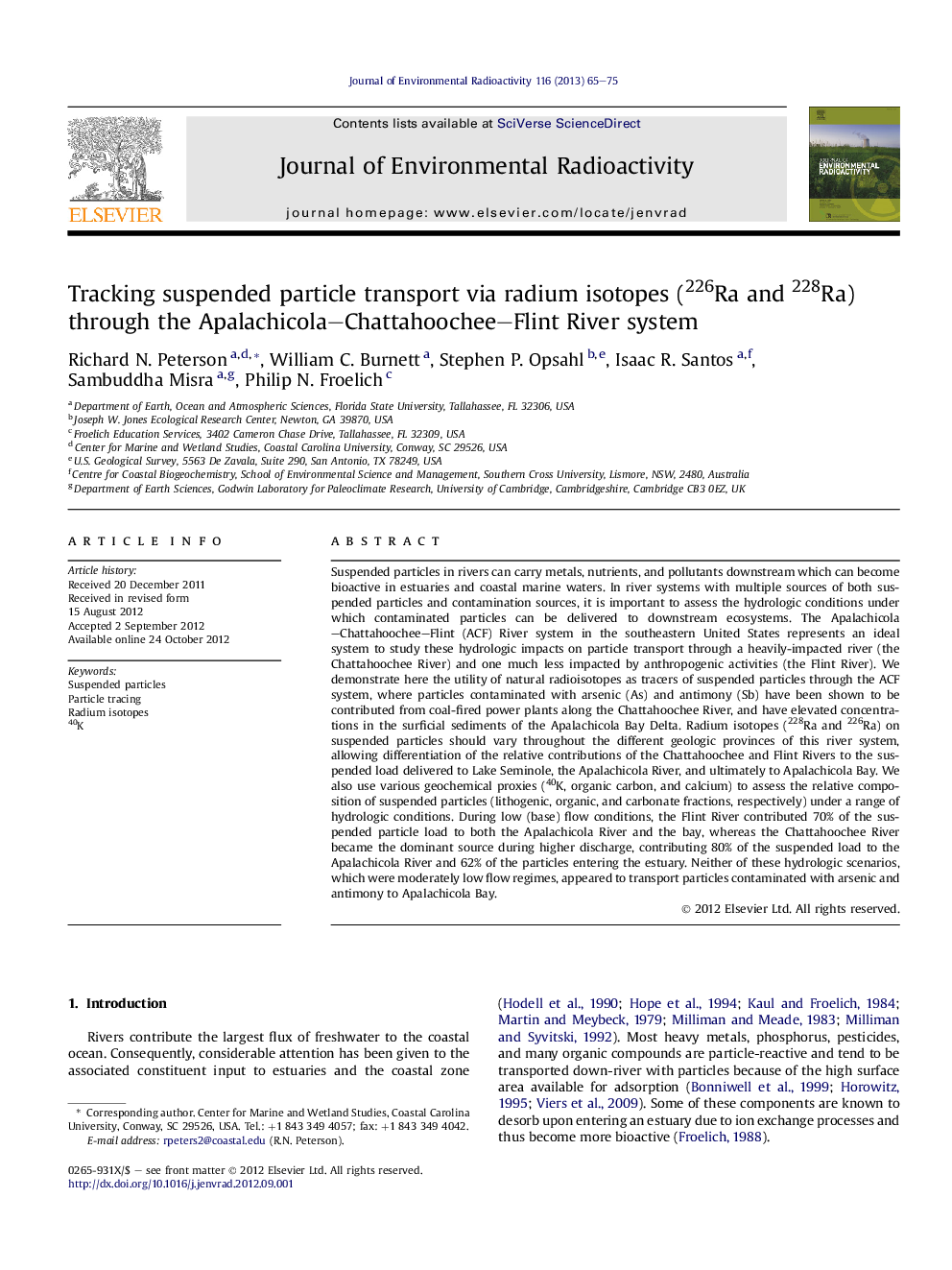| کد مقاله | کد نشریه | سال انتشار | مقاله انگلیسی | نسخه تمام متن |
|---|---|---|---|---|
| 1738293 | 1521617 | 2013 | 11 صفحه PDF | دانلود رایگان |

Suspended particles in rivers can carry metals, nutrients, and pollutants downstream which can become bioactive in estuaries and coastal marine waters. In river systems with multiple sources of both suspended particles and contamination sources, it is important to assess the hydrologic conditions under which contaminated particles can be delivered to downstream ecosystems. The Apalachicola–Chattahoochee–Flint (ACF) River system in the southeastern United States represents an ideal system to study these hydrologic impacts on particle transport through a heavily-impacted river (the Chattahoochee River) and one much less impacted by anthropogenic activities (the Flint River). We demonstrate here the utility of natural radioisotopes as tracers of suspended particles through the ACF system, where particles contaminated with arsenic (As) and antimony (Sb) have been shown to be contributed from coal-fired power plants along the Chattahoochee River, and have elevated concentrations in the surficial sediments of the Apalachicola Bay Delta. Radium isotopes (228Ra and 226Ra) on suspended particles should vary throughout the different geologic provinces of this river system, allowing differentiation of the relative contributions of the Chattahoochee and Flint Rivers to the suspended load delivered to Lake Seminole, the Apalachicola River, and ultimately to Apalachicola Bay. We also use various geochemical proxies (40K, organic carbon, and calcium) to assess the relative composition of suspended particles (lithogenic, organic, and carbonate fractions, respectively) under a range of hydrologic conditions. During low (base) flow conditions, the Flint River contributed 70% of the suspended particle load to both the Apalachicola River and the bay, whereas the Chattahoochee River became the dominant source during higher discharge, contributing 80% of the suspended load to the Apalachicola River and 62% of the particles entering the estuary. Neither of these hydrologic scenarios, which were moderately low flow regimes, appeared to transport particles contaminated with arsenic and antimony to Apalachicola Bay.
► We use radioisotopic tracers of suspended particles in a regulated river system.
► Radium isotopes are effective tracers of suspended particles.
► We see relatively more suspended particles from the Flint River during low flow.
► We see more suspended particles from the Chattahoochee River during higher flow.
► We use 40K as a proxy of lithogenic constituents in suspended particles.
Journal: Journal of Environmental Radioactivity - Volume 116, February 2013, Pages 65–75